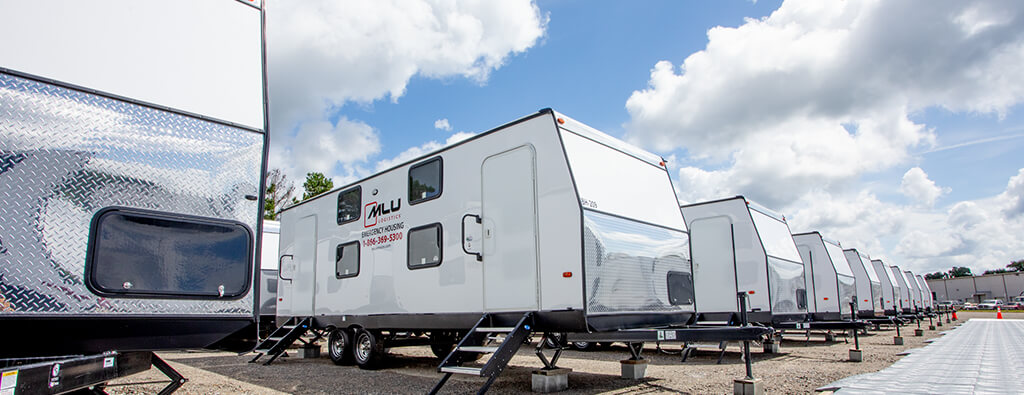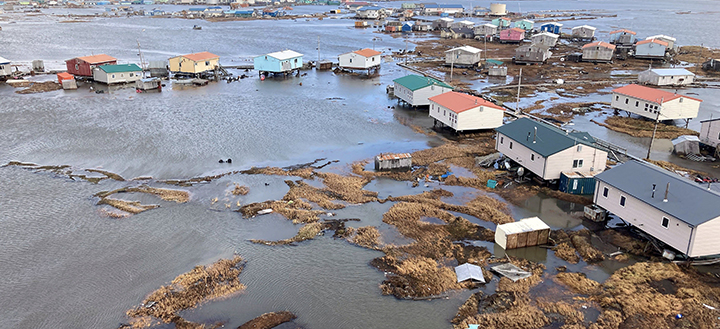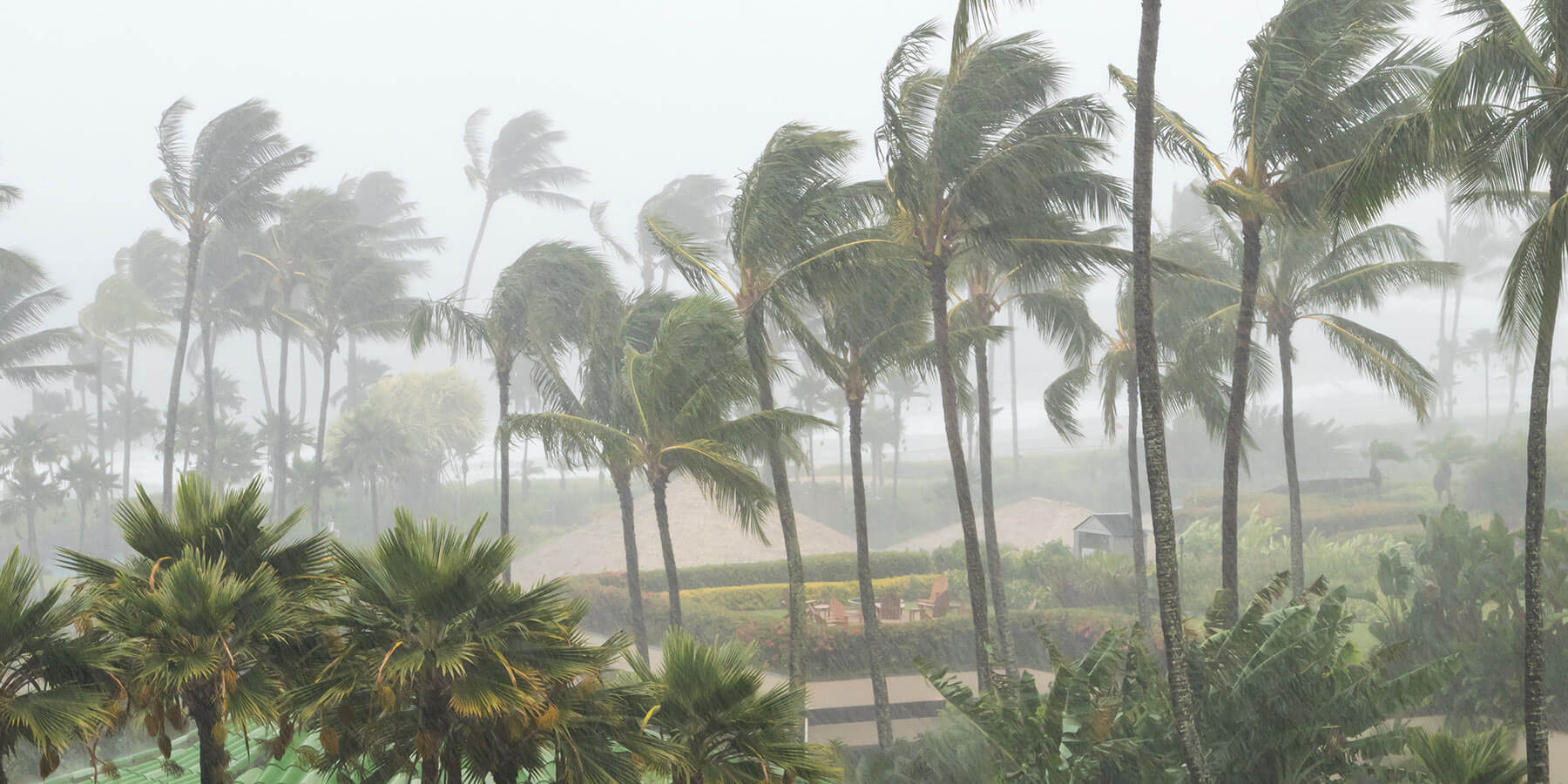When disaster strikes, utility companies face immense pressure to restore services as quickly as possible. However, the scale of such operations often means bringing in workers from across states or even other countries. This influx of personnel creates logistical challenges, particularly in areas where local infrastructure is damaged or compromised.
Base camps solve these challenges by offering a centralized, fully functional space for responding workers to rest, regroup, and coordinate their efforts.
As an operating division of Tidal Basin, MLU Services (MLU) specializes in providing turnkey rapid response solutions, including the setup and management of base camps during emergencies. We partner with MLU to deliver essential support services quickly and efficiently, right when and where they’re needed most.
Below, we’ll explore the importance of base camp construction, how portable solutions like temporary housing, sleep trailers, and mobile laundry trailers facilitate response efforts, and why custom-tailored approaches are important for utility companies to operate effectively in disaster zones.
What are Base Camps in Disaster Response?
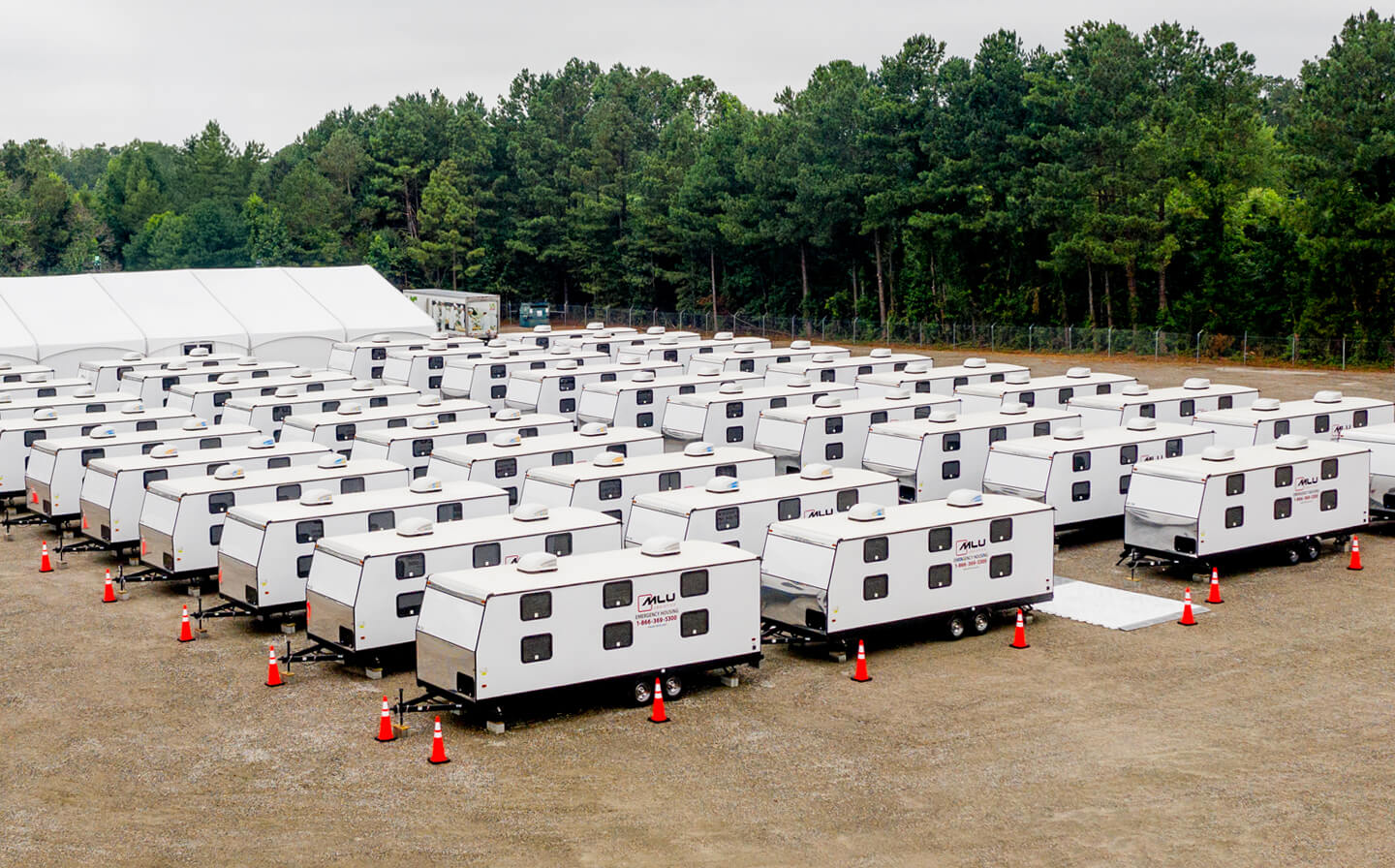
Base camps are temporary facilities established in or near disaster-stricken areas to house utility workers, coordinate workflow, and support service restoration.
Andy Huckaby, Director of Purchasing & Base Camp Operations at MLU, describes these facilities as “small cities” designed to ensure utility crews operate as efficiently as possible.
Their purpose is twofold:
- To provide utility workers with essential amenities like rest, food, hygiene, and security.
- To reduce “windshield time,” the time spent traveling to the disaster zone, and maximize worker efficiency.
From compact 500-person crew trailer sites to large-scale constructions housing thousands, base camps are tailored to meet the unique needs of each disaster response scenario.
How Do Base Camps Help Utility Companies?
Base camps help move disaster response along by giving utility crews a place to stay and work close to where the damage occurred.
Because the camps are set up near the affected areas, crews spend less time getting to job sites and more time making repairs.
These camps are also designed to be self-sufficient, with dedicated sources of power, water, food, and sanitation. This is especially important when local systems are offline or overwhelmed.
Base camps are built to support the health and safety of workers during disaster response. In these situations, crews often work long hours, sometimes twelve to sixteen hours a day, in challenging and unpredictable environments.
To support recovery between shifts, base camps provide temporary housing where workers can rest. Mobile shower units and laundry facilities are also available when regular services are not an option.
Meals are prepared by remote site catering teams focused on providing the nutrition needed for physically demanding tasks. Large tents can be set up as dining facilities, serving hundreds of meals per day.
Keeping crews at a base camp instead of hotels can benefit the broader community by leaving more accommodation available for displaced residents and families affected by the disaster.
Even during emergencies, utility companies must meet strict health and safety standards. Base camps make this possible by providing clean living quarters, proper sanitation, and structured safety protocols that meet industry requirements.
How Quickly Can Base Camps Be Deployed?
Speed is critical in disaster scenarios, and base camp providers strive to respond quickly with installation and setup.
Typically, utility companies aim for camps to be operational within 48 to 72 hours of an emergency. Leading providers demonstrate exceptional efficiency, some setting up fully functional camps within 36 hours.
Important Components of a Base Camp for Utility Crews
To support large utility response teams, base camps should include the following elements to maximize efficiency and comfort:
Temporary Housing, Sleep Trailers, and Executive Quarters
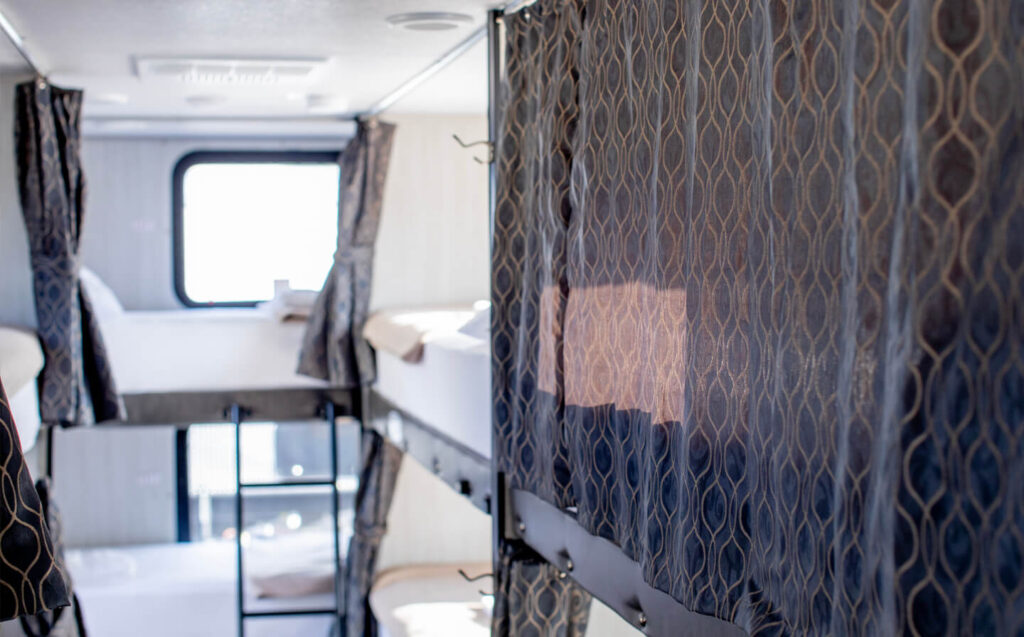
Temporary housing and sleep trailers are at the heart of any base camp. Equipped with HVAC systems, comfortable bedding, and clean spaces, these trailers provide much-needed rest for utility workers tasked with long shifts.
Additional mobile trailers can serve as executive headquarters, first aid locations, or designated crew trailers with meeting spaces for management and staff.
Mobile Shower Units and Laundry Trailers
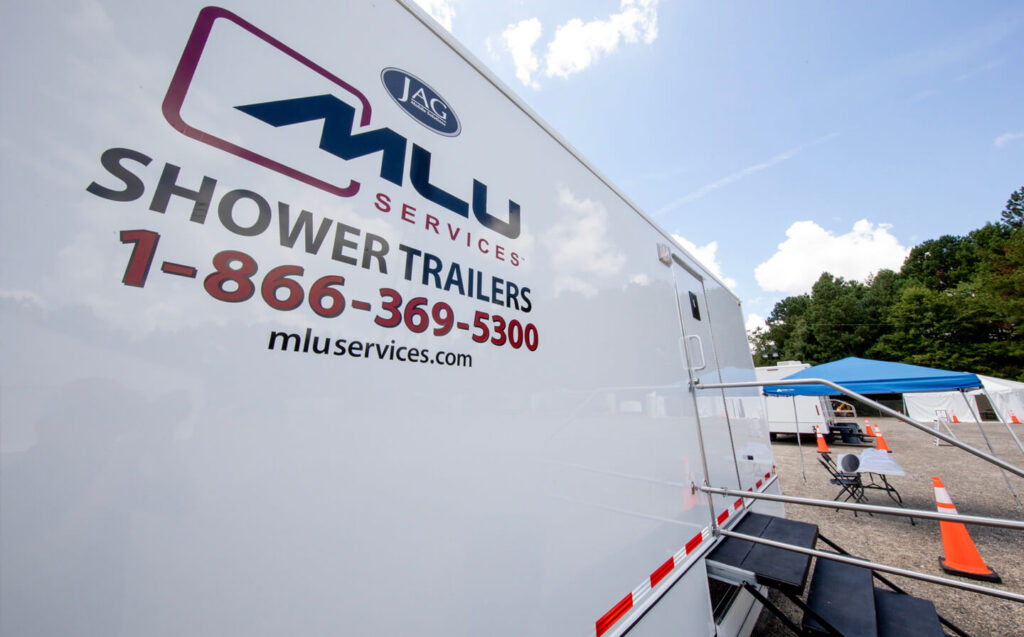
Maintaining hygiene in disaster zones is vital for health, morale, and team productivity. Mobile shower units provide clean, reliable spaces for crews to freshen up after physically demanding work in harsh conditions.
Additionally, mobile laundry trailers allow staff to wash their clothes and preserve their hygiene, while bringing a sense of normalcy.
Remote Site Catering and Food Services
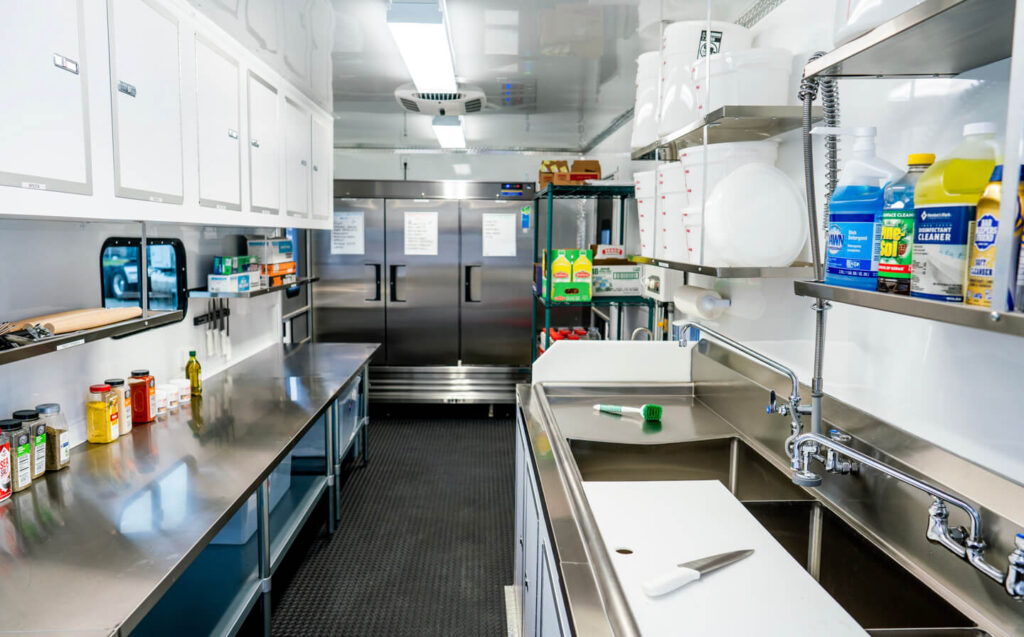
Nutrition is a game-changer for maintaining energy levels and morale. Crews rely on hot meals prepared by remote site catering staff to help them recover and recharge between shifts.
Mobile kitchens, prep trailers, climate-controlled dining spaces, and high-calorie meals are part of the resources MLU makes available for base camp construction.
Base Camp Support Facilities
Additional amenities, such as on-site power generation and dining halls, enhance operational capability.
These options assist with real-time communication, coordination, and effective resource allocation.
Scalability and Flexibility
Thanks to modular designs, base camps can be easily expanded by deploying additional trailers or upgrades, allowing utility companies to adapt to changing needs during disaster recovery.
Base Camp Security
Base camps come with 24/7 security measures, including fencing, on-site personnel, and controlled access points.
These measures protect equipment, supplies, and crews, even when working under pressure in disaster areas.
Integration of Command Centers
Some base camps also include mobile command units to enable better communication and oversight.
These units serve as the operational nerve center, providing real-time updates and coordination between stakeholders.
Future Trends in Base Camp Construction
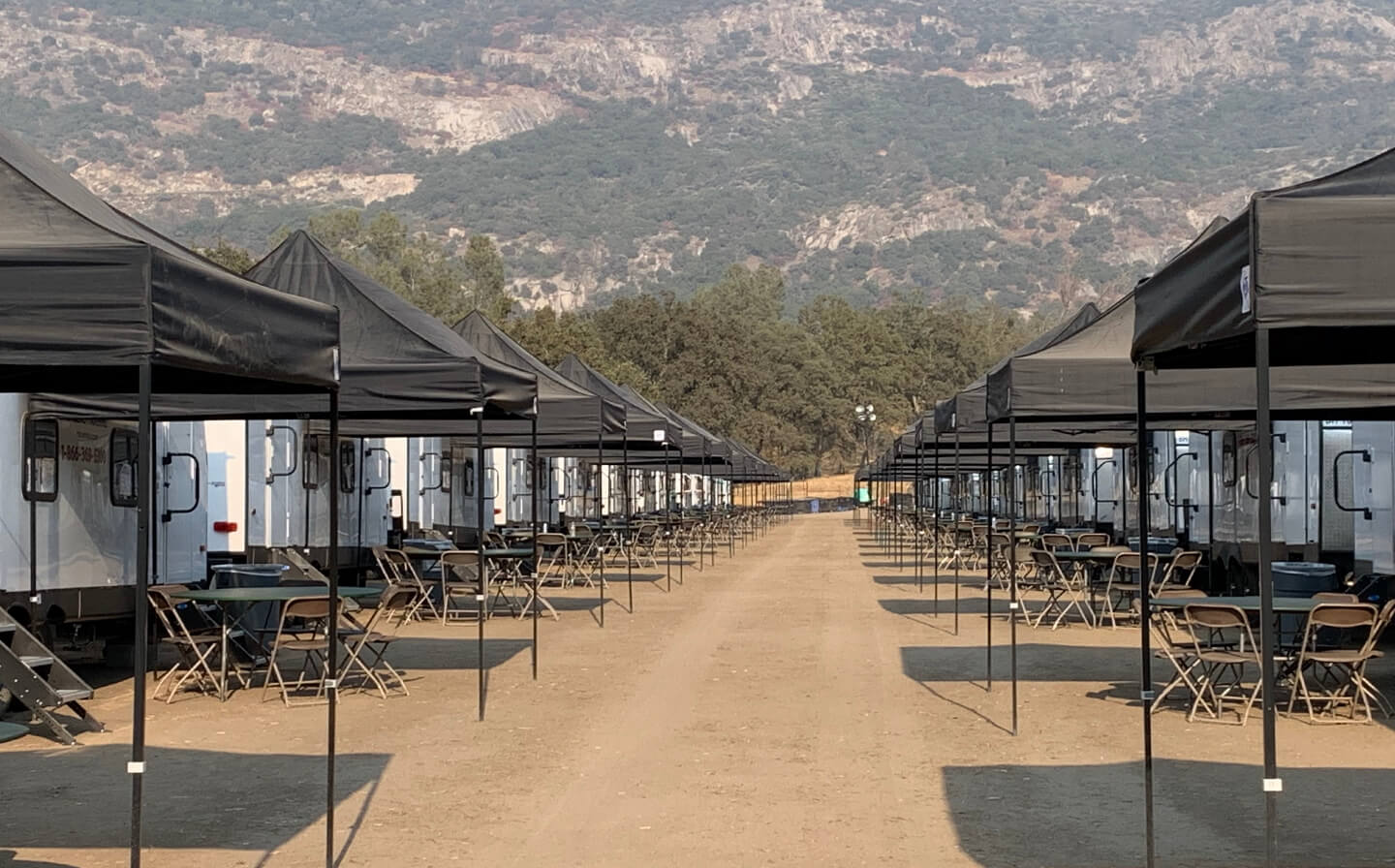
Disaster response efforts rarely follow the same blueprint. Every situation presents unique challenges, from the scale of damage to the geographic spread of the affected area. Learning from past disasters, base camp providers are constantly improving their tactics.
Micro-Camp Strategy
One noticeable trend in base camp construction is the shift from “mega camps,” serving thousands, to smaller, strategically located camps across disaster areas.
Smaller camps positioned closer to affected areas reduce travel time, allowing workers to spend more time on restoration efforts.
For example, instead of one central 3,000-person hub, multiple 500–800-person camps may be deployed across disaster zones to speed up assistance and response.
Continual Innovations
Modern base camps have evolved beyond tents and cots, with new innovations, such as:
- High-quality bunks with extra-thick mattresses.
- Enhanced hygiene protocols with better shower and restroom facilities.
- Real-time logistical planning using CAD layouts for efficient site selection.
- Solar-powered energy, water reclamation systems, and waste reduction technologies for sustainable camps.
- Mobile apps and real-time analytics platforms to coordinate camp logistics, track occupancy rates, and manage supply chains more easily.
Real-Life Applications of Emergency Base Camps
Hurricane Helene, 2024
During Hurricane Helene, MLU oversaw the deployment of eight base camps across three states. These sites supported thousands of linemen working to restore power across Georgia, South Carolina, and Florida. Within just 36 hours, four camps were operational, housing over 1,800 personnel.
The camps provided essentials such as housing, meals, showers, and tool storage areas. Importantly, they enabled linemen to begin restoration efforts immediately, minimizing downtime and maximizing operational performance.
Why Tailored Base Camp Solutions Matter
Utility companies cannot afford delays when responding to disasters. Base camps are the foundation for keeping crews rested, fed, and ready to tackle the challenges ahead.
Customizing base camps with the proper support layouts allows them to address specific demands, whether that means accommodating larger crews, extending operational timelines, or adapting to evolving disaster conditions.
Utility personnel working 14-hour days shouldn’t have to endure an extra hour-long drive each way to their sleeping quarters. A formal, established base camp will make sure crews stay close to their work zones and remain effective throughout extended operations.
Contact us today to build a plan that provides for the safety and efficiency of your workers.
